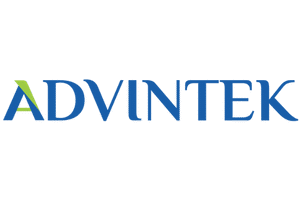In today’s evolving landscape businesses require effective methods for sharing information. The Standard Business Document Header (SBDH) provides a method for handling documents. For organizations seeking to enhance their document exchange procedures integrating SBDH can make an impact. This article will delve into the strategies for integrating SBDH into your business processes guaranteeing an efficient transition.
Understanding SBDH
- What is SBDH?
SBDH, short for Standard Business Document Header, serves as a framework crafted to ease the transmission of digital documents among different organizations. It establishes an approach in attaching metadata to documents thereby offering a means of recognizing, handling and directing business data.
- Reasons for Incorporating SBDH
The integration of SBDH yields advantages such as document management, increased compatibility across systems and minimized human errors. Through the adoption of SBDH companies can streamline their operations, cut down on expenses and elevate the precision of their data.
Getting Started with SBDH
- Assess Your Current Processes: Before diving into SBDH it’s important to review how you currently exchange documents. Identify any challenges or inefficiencies in your system. Knowing where you stand will help tailor the SBDH rollout to meet requirements.
- Establish Clear Goals: Define goals for what you aim to accomplish with SBDH. Whether its enhancing data accuracy, streamlining document processing or improving interoperability setting objectives will shape your implementation approach and gauge progress.
- Select the Right Tools: Picking the tools and software for implementing SBDH is crucial. Seek out solutions that work well with your setups and can seamlessly blend into your workflows. Consider aspects, like scalability, user friendliness and available support services when deciding on the fit.
Best Practices for SBDH Implementation
- Standardize Document Formats: For utilization of SBDH it is important to ensure that all your business documents adhere to standardized formats. This consistency will facilitate data exchange. Minimize errors. Using formats such as XML or JSON can greatly improve the efficiency of your SBDH processes.
- Ensure Data Accuracy: The accuracy of data is crucial for a SBDH implementation. Regularly. Clean your data to uphold its integrity. Automated validation tools can assist in identifying and rectifying errors guaranteeing the reliability and accuracy of exchanged information.
- Educate Your Team: It is essential to educate your team about SBDH and its advantages for an implementation. Conduct training sessions to ensure everyone comprehends the procedures and can effectively utilize the tools. An informed team is more likely to embrace the changes and contribute positively to their success.
- Thorough Testing: Prior to implementation of SBDH conduct testing to uncover any potential issues. Simulate real world scenarios to verify that the system can handle situations effectively. Testing aids in refining the implementation process. Prevents disruptions during operations.
- Continuous Monitoring and Optimization: Post implementation consistently monitors the performance of your SBDH system. Gather feedback from users. Analyze performance metrics to pinpoint areas, for enhancement. Keeping the system up to date and fine tuning it regularly will ensure that it remains efficient and meets your business requirements effectively.
Ensuring Compliance and Security
- Adhering to Industry Standards: To ensure that you’re compliant and your data is secure it’s important to follow industry standards when using SBDH. Make sure your processes adhere to regulations, like ISO standards to maintain credibility and avoid troubles. Keeping up with the industry norms will also help you adjust to any changes and keep your system in line.
- Implementing Robust Security Measures: When it comes to security, protecting information is key. Implement security measures to safeguard the data shared through SBDH. Utilize encryption, authentication methods and conduct security checks to ensure that your data remains private and shielded from unauthorized access.
- Regular Audits and Reviews: Regularly conducting audits and reviews of your SBDH setup is crucial. These evaluations will help pinpoint any compliance or security issues so you can deal with them promptly. Routine audits also ensure that your system stays current, with changing standards and industry best practices.
Benefits of Using SBDH
1. Enhanced Efficiency
Implementing SBDH helps streamline the process of exchanging documents, reducing the need for intervention and speeding up transactions. This increased efficiency leads to savings in both time and costs for your company.
2. Improved Interoperability
By utilizing document formats SBDH facilitates communication among various systems and organizations. This improved interoperability makes it simpler to collaborate with both partners and clients.
3. Enhanced Accuracy
Through the standardization of metadata and document formats SBDH minimizes errors during data exchange. This heightened accuracy lowers the chances of misunderstandings. Ensures that information is accurately understood.
4. Scalability
SBDH offers a solution that can expand alongside your businesss needs. As your demands for exchanging documents grow SBDH can handle volumes. Increased complexity, without sacrificing performance.
Conclusion
Incorporating SBDH into your company can greatly enhance your document sharing procedures resulting in improved efficiency, accuracy and compatibility. By adhering to recommended practices, like standardizing document layouts, ensuring data precision training your staff and monitoring progress you can seamlessly integrate SBDH into your business operations. Embrace the advantages of SBDH to position your company for increased success in the era.
At Advintek we are dedicated to assisting companies in implementing SBDH. With our knowledge and assistance you can streamline your document sharing processes. Accomplish your goals. Reach out Advintek today to discover more and kickstart your journey, towards optimized business functions.









